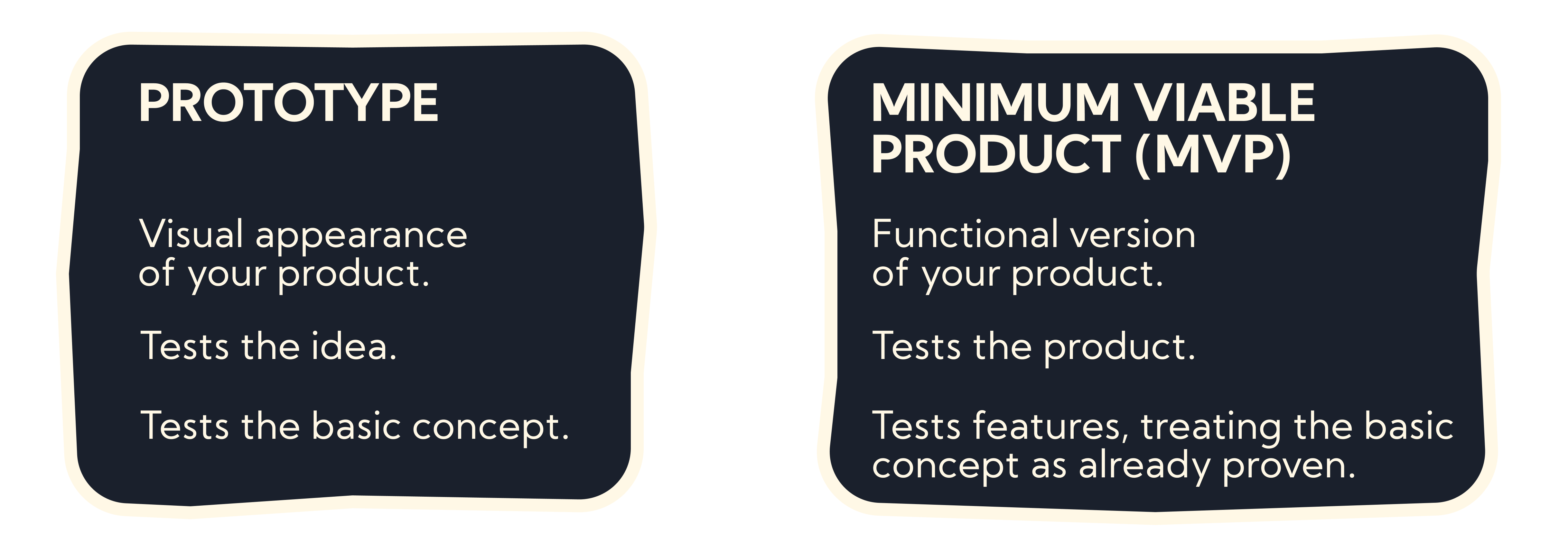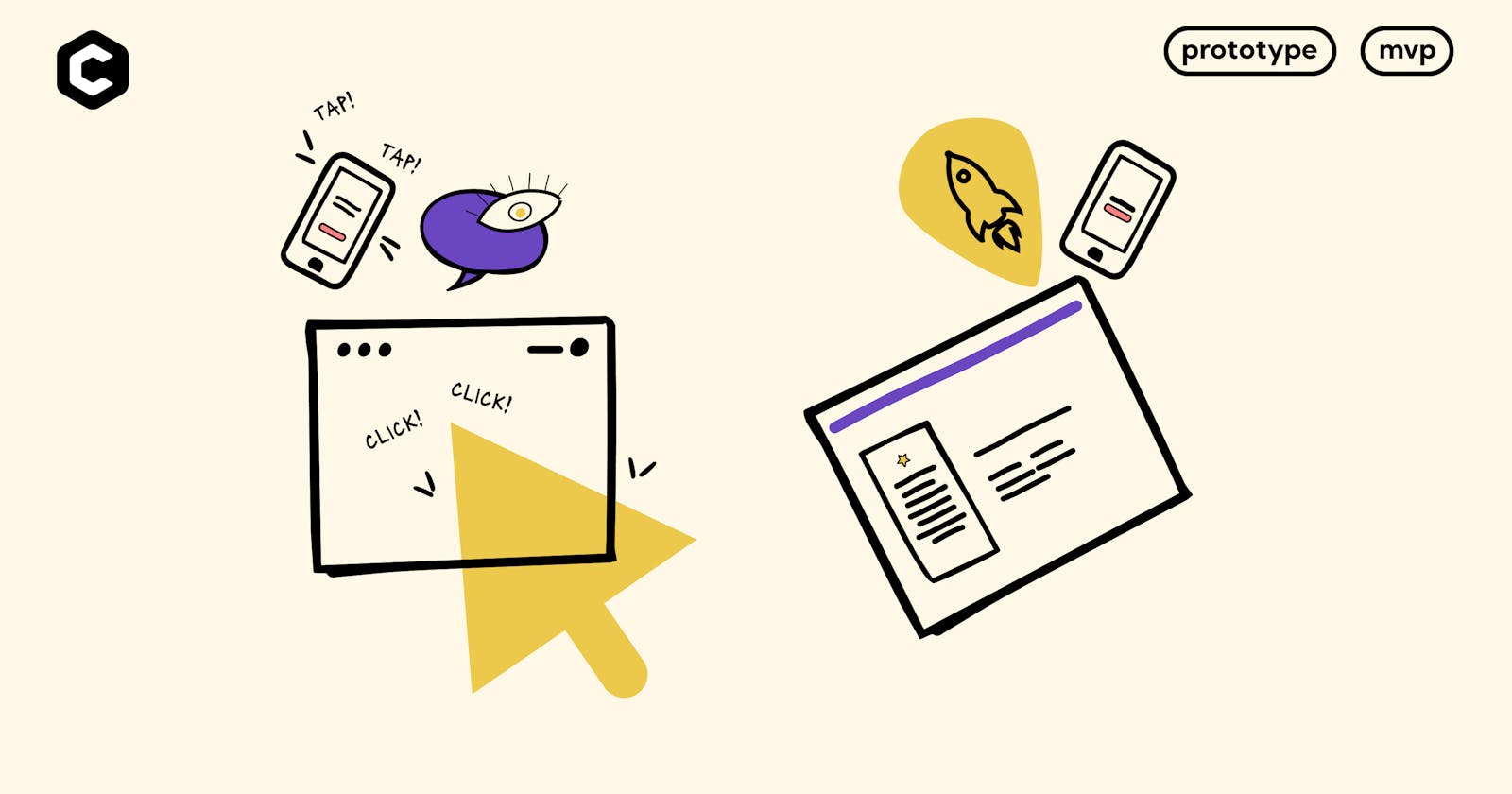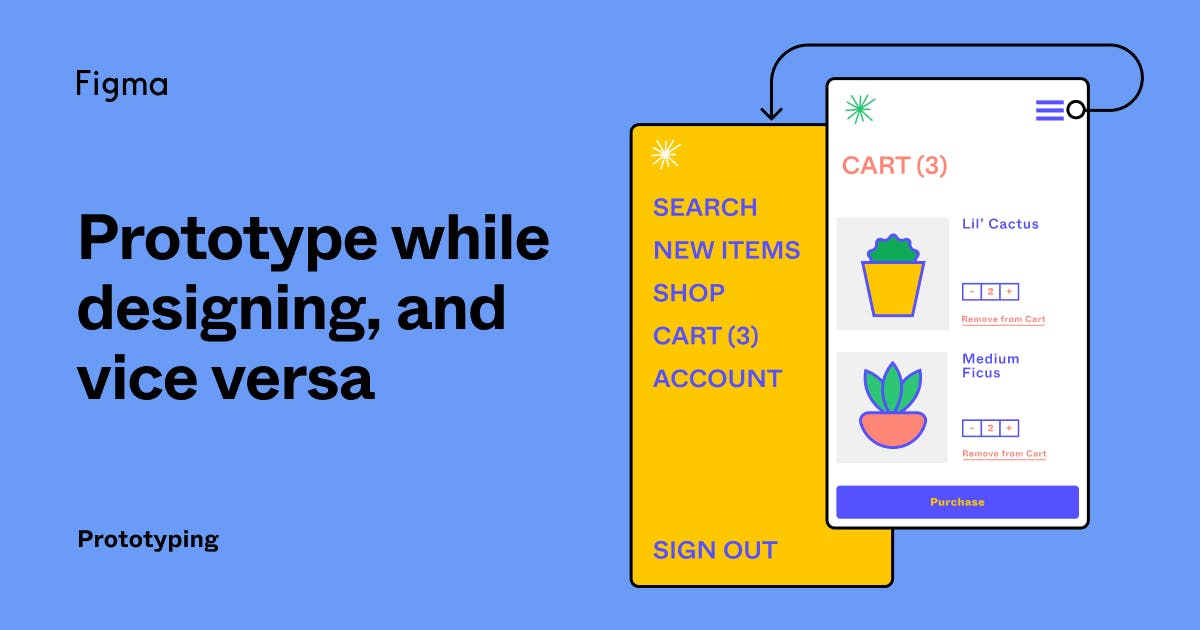A prototype or an MVP: What should the first version of your product be? What’s the difference between the two? What are they used for?
Keep reading for the answers. Today we're going to talk about these 3 topics. Let's start.
Prototype vs MVP: Short Definition

Let's say that prototypes are often confused with MVPs because of their same purpose. Both are designed to help validate your idea. But how they are approached is fundamentally different. With the following 3 basic definitions, we will make it easier for you to understand the difference between a prototype and a minimum viable product (MVP):
Prototypes are created before an MVP.
A prototype is an interactive, working visualization, in another word, simulation of the product, meant to identify usability flaws that can affect user experience.
A minimum viable product is an early version of your product but with core and functional features, meant to collect people's feedback.
We already wrote an article on how to build an MVP.
Prototype

The prototype actually is a sample of what will become your final product.
A beauty in prototypes is that they are non-committal and can be used in every stage of the process. Also, they can be animated and easily sharable with friends, teams, and potential investors. Whether it’s about embodying an idea or testing a specific feature, prototyping is a powerful way to explore concepts, understand usability and improve functionality.
In this experimental process, the dev team implements ideas from paper to digital. The prototype can come in a thousand shapes and sizes from paper prototypes and sketches to functional interactive prototypes. There is an abundance of tools, but in our process, we use Figma.
✋ 5 Advantages of Prototyping
- You can attract investors. With prototyping your initial product you can get investors to consider and invest in your startup.
- You can optimize resources. With creating a prototype, you can identify flaws of the design (like UI elements) and be fixed before the development begins.
- Iterate designs. Tools like Figma help the team create many design iterations in a short time. This can last until you can choose the design with the best performance and make some internal experiments.
- You can collect feedback. Prototyping is the best way to test users for initial feedback. User testing is an important component in this phase. It can help improve and shape the design and still have enough time to fix the flaws.
- You can polish your idea. By creating a prototype, you can simplify and transform your idea into a visually appealing and refined format.
Minimum viable product (MVP)
In the minimum viable product approach, the word minimum is important here. There is nothing irrelevant in an MVP. Focused on one or few core features, a minimum viable product can be used, tested, and played with. No need to ask your test users theoretical questions, you’re only observing their behavior and collecting specific feedback of a practical nature. Okay, let’s be more clear here… an MVP is not just the functioning early release version of your final product with core features. A minimum viable product on the other hand is an experiment, testing part of your solution with the users who are experiencing the problem. And, the resulting data helps you produce a better, more marketable version of your final product.
✋ 5 Advantages of MVP
You can attract investors. By creating a prototype you can provide seed funding for your startup... But if your MVP intrigues people with a positive reaction, it can help you gain a much bigger investment!
Save you time and resources – We already said that there's no need to implement all of the features in your MVP. That means the development work is reduced and the risk of over-building features is minimized.
Helps you have a better understanding of the ‘problem’.
Confirm and engage with your users – You’re not just testing the product, you’re also testing and identified the people who really need your product. You’re also putting the word out on the upcoming product, creating interest, raising awareness, a buzz...
- You let the money in. With an MVP out in the market and good marketing, you can start acquiring paying users that will support your growth.
Let’s not forget the dev team. Launching an MVP is motivational: there’s a tangible representation of the future product; an MVP means progress.
In a nutshell
The differences between an MVP and a prototype.

So, which one is better for the first version of your product: MVP or prototype?
There is no winner! Which approach is better depends on the stage of the product you’re building, its scope, and intended users, but one thing is sure that for validating your initial idea, either a prototype or an MVP will be sufficient. Both prototypes and MVPs can be used to reduce risk, reduce costs, so there’s no need to invest in a huge, complex platform without going first through one of those (or both) stages. When our team is working on a proposal, they always choose the solution that best fits the client's needs, budget, and business goals.
If you want to test the basic product concept and you have a limited budget, create a prototype.
If you want to test if the users really want a specific feature, build an MVP.
If you’re not sure which approach would fit best for your product, our dev team is always happy to talk and help you with your challenge, so feel free to contact us as well!
COMING UP NEXT:
How to hire a dedicated development team for your Startup.




